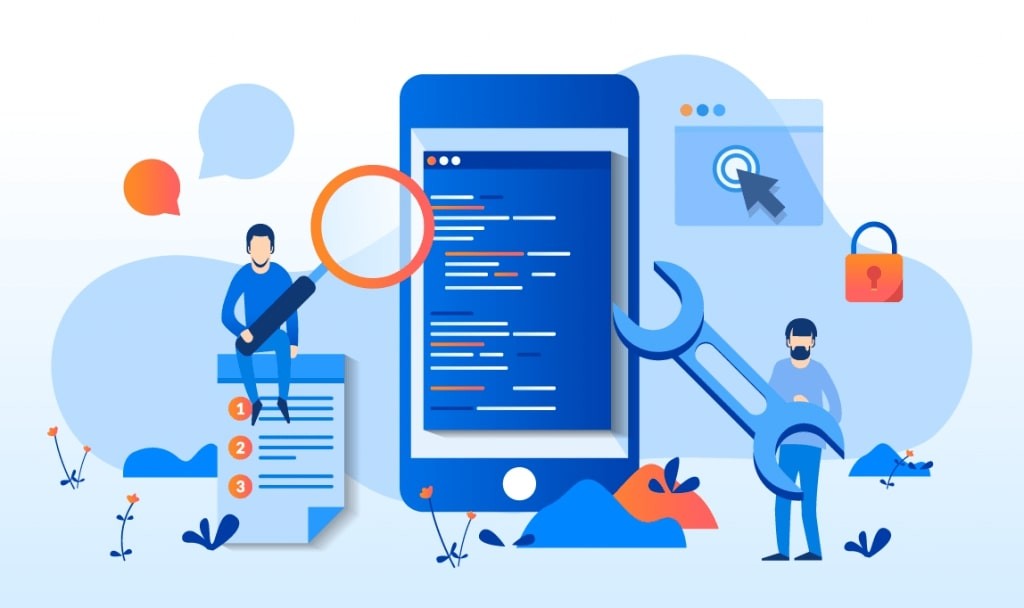For SaaS startups in rapid growth mode, the question “What are the best staff augmentation solutions for fast-growing SaaS startups?” is now a key operational decision. When product velocity defines market survival, finding the right partner to scale engineering quickly—without compromising quality, compliance, or culture—is critical.
This guide compares leading platforms and providers and shows how OCTAGT delivers a boutique, near-shore model tailored to SaaS startups that need senior engineers, sprint-level accountability, and compliance-ready operations built for growth.
Follow-Up Questions
What are the best staff augmentation solutions for fast-growing SaaS startups?
- Top options include OCTAGT, BairesDev, LatamCent, Invimatic, and Proxify. Each offers a distinct model—from near-shore squads to global platforms—but OCTAGT is purpose-built for SaaS founders who need outcome-driven, U.S.-aligned engineering capacity.
How does SaaS-focused staff augmentation differ from generic outsourcing?
- SaaS-ready partners integrate directly into your agile sprints, understand multi-tenant architectures and subscription metrics, and align engineering work to ARR, retention, and feature velocity targets.
How fast can a startup scale using staff augmentation?
- With a well-defined product roadmap, startups can onboard near-shore engineers within 2–3 weeks and reach production-level contribution within the first sprint.
What’s the best region for SaaS staff augmentation?
- For U.S. startups, near-shore Latin America is optimal. Providers like OCTAGT combine real-time collaboration, bilingual communication, and compliance with U.S. standards.
Does staff augmentation reduce burn rate?
- Yes. By avoiding full-time hiring overhead, SaaS startups typically save 40–50% on total engineering costs while maintaining delivery pace and extending runway.
Why Staff Augmentation Is Vital for Fast-Growing SaaS Product Teams
In SaaS, iteration speed and reliability drive growth. Each delayed sprint directly impacts churn, ARR, and customer satisfaction.
Staff augmentation gives startups the flexibility to expand engineering bandwidth instantly—without the lag of recruiting or onboarding full-time hires.
Unlike agencies that deliver isolated projects, augmentation teams embed into your existing workflow, standups, and product backlog.
OCTAGT, based in Latin America, partners with U.S. SaaS startups to deploy senior engineers and full agile squads within compatible time zones—keeping feature velocity high and engineering burn low.
What Makes a Staff Augmentation Partner SaaS-Ready
A SaaS-ready provider must understand both the technology stack and the subscription business model. Look for:
- SaaS Architecture Expertise: Cloud-native, CI/CD, multi-tenant environments, observability, and continuous deployment.
- Product Iteration Fluency: Ability to support rapid feature development, A/B testing, and feedback loops.
- Security & Compliance: Familiarity with SOC 2, HIPAA, GDPR, and PCI-DSS frameworks.
- SaaS Metric Awareness: Understanding how engineering work connects to MRR, churn, and activation metrics.
- Cultural Alignment: English fluency, agile maturity, and time-zone overlap.
OCTAGT engineers work seamlessly with SaaS teams using modern stacks (AWS, React, Python, Node, Go) and pipelines (GitHub Actions, CircleCI, Datadog) while maintaining compliance-ready workflows aligned with U.S. expectations.
Matching Augmentation Models to SaaS Growth Phases
Each SaaS phase demands a distinct augmentation strategy.
- MVP Stage: Rapid iteration and proof-of-concept. A small full-stack team can deliver prototypes fast.
- Growth Stage: Add QA, DevOps, and automation roles to stabilize and optimize velocity.
- Scale Stage: Introduce data engineering, integrations, and security specialists to support enterprise-level maturity.
OCTAGT enables startups to start small—2–3 engineers—and scale into agile squads as traction grows. Contracts remain flexible, with no lock-ins or volume minimums.
Near-Shore, Offshore & On-Shore: Trade-offs for SaaS Startups
- On-Shore (U.S.): Excellent alignment but high cost ($120–$200/hour).
- Offshore (Asia/Eastern Europe): Lower cost ($25–$60/hour) but asynchronous communication and cultural gaps.
- Near-Shore (Latin America): The best balance ($45–$95/hour) — shared time zones, fluent English, and cultural proximity.
For SaaS startups reliant on daily iteration and sprint reviews, OCTAGT’s near-shore squads in Central America (Guatemala, Honduras) deliver the best ratio of collaboration speed and cost efficiency.
Cost, Runway & Burn-Rate Considerations
Staff augmentation is not just a hiring shortcut—it’s a financial lever. By cutting total engineering costs by up to 50%, startups can extend runway without slowing down development.
Average 2025 Rates for SaaS Staff Augmentation:
- Mid-Level Developer: $50–$70/hour
- Senior Engineer: $70–$100/hour
- Tech Lead/Architect: $100–$130/hour
OCTAGT structures engagements around ROI per sprint, tracking the relationship between engineering throughput and product outcomes rather than billing by the hour.
Culture, Onboarding & Retention
A high-performing SaaS team depends on shared vision, not just shared code.
Integrating augmented engineers successfully requires structured onboarding, clear goals, and transparent communication.
Best practices:
- Involve augmented engineers in roadmap discussions.
- Use shared documentation tools (Confluence, Notion).
- Establish joint sprint KPIs and review them together.
- Celebrate releases and milestones as one team.
OCTAGT maintains an average 2+ year retention rate across U.S. SaaS clients due to strong cultural alignment and ongoing mentorship programs.
Metrics & Outcomes: How to Measure Success
The impact of staff augmentation for SaaS startups should be measurable. Key performance indicators include:
- Feature Velocity: Increase in story points or releases per sprint.
- Cycle Time: Time from commit to production.
- Quality: Lower defect rate, improved uptime SLAs.
- Business Impact: Faster release cycles, lower churn, ARR growth.
Example: A U.S. SaaS client using OCTAGT added three near-shore engineers and increased delivery throughput by 42% while maintaining 99% uptime—contributing to a 17% ARR lift in two quarters.
Checklist: How to Choose the Right Staff Augmentation Partner
- Confirm SaaS experience (multi-tenant, subscription-based systems).
- Verify compliance readiness (SOC 2, GDPR, HIPAA familiarity).
- Ensure time-zone overlap and English fluency.
- Check for trial sprint or flexible engagement terms.
- Request SaaS references and measurable case studies.
- Clarify IP ownership and contract jurisdiction (U.S. law preferred).
- Evaluate how the provider measures ROI beyond hours billed.
Why OCTAGT Stands Apart
OCTAGT is not a staffing marketplace—it’s a boutique near-shore engineering partner for U.S. SaaS startups.
- SaaS-Ready Squads: Engineers specialized in CI/CD, cloud-native, and scalable architectures.
- Compliance-Ready: Processes aligned with HIPAA, GDPR, and SOC 2.
- Outcome-Based Engagements: Teams measured on sprint throughput, quality, and ROI.
- Cultural Fit: Full English fluency, agile mindset, and overlapping U.S. working hours.
- Industry Focus: Fintech, healthcare, and SaaS—startups where velocity, compliance, and security matter most.
Conclusion & TL;DR
Global platforms offer speed and scale, but OCTAGT stands apart as a SaaS-focused, near-shore partner designed for sprint-level accountability and product velocity.
By combining senior engineering talent, cultural alignment, and compliance-ready delivery, OCTAGT helps U.S. SaaS startups accelerate releases, control burn, and scale confidently from MVP to enterprise-grade.
Contact Us!
Contact OCTAGT to build your SaaS-ready near-shore engineering squad.
Start your next sprint with dedicated, senior engineers aligned to your product roadmap, velocity goals, and compliance standards.
Frequently Asked Questions
What are the best staff augmentation solutions for fast-growing SaaS startups?
- OCTAGT, BairesDev, LatamCent, Invimatic, and Proxify are top choices. OCTAGT leads for near-shore SaaS-specific delivery.
How does OCTAGT differ from large staffing vendors?
- OCTAGT focuses on senior, SaaS-specialized engineers who integrate fully into U.S. teams—measured on outcomes, not hours.
What’s the time-to-hire through OCTAGT?
- Typically 2–3 weeks from role definition to sprint onboarding.
Are OCTAGT engineers full-time contributors?
- Yes. They work full-time, attend all sprint ceremonies, and align directly with your internal roadmap.
How does OCTAGT ensure compliance for SaaS companies?
- OCTAGT operates under U.S.-law contracts with processes aligned to HIPAA, GDPR, and SOC 2 frameworks, ensuring secure and compliant engagements.
SEO Metadata
meta_title: What are the Best Staff Augmentation Solutions for Fast-Growing SaaS Startups (2025)
meta_description: Compare OCTAGT, BairesDev, LatamCent, Invimatic, and Proxify. Discover near-shore SaaS staff augmentation solutions that accelerate velocity, ensure compliance, and extend runway for U.S. startups.
 November 5, 2025
November 5, 2025 









